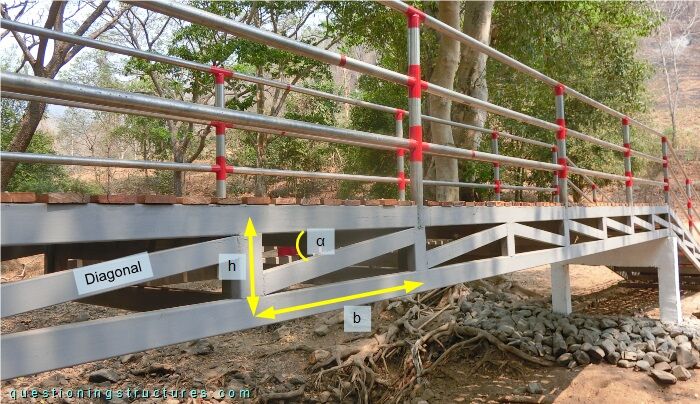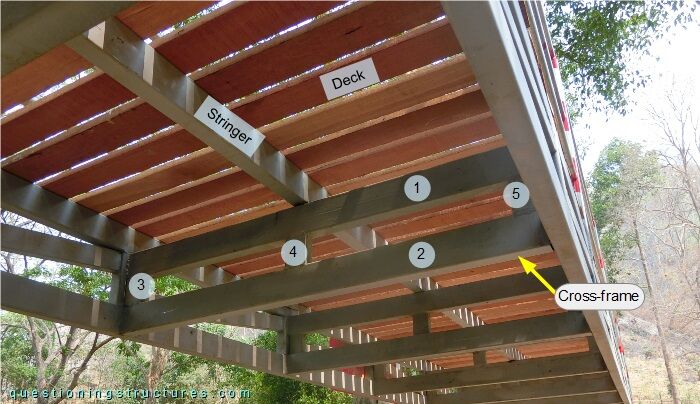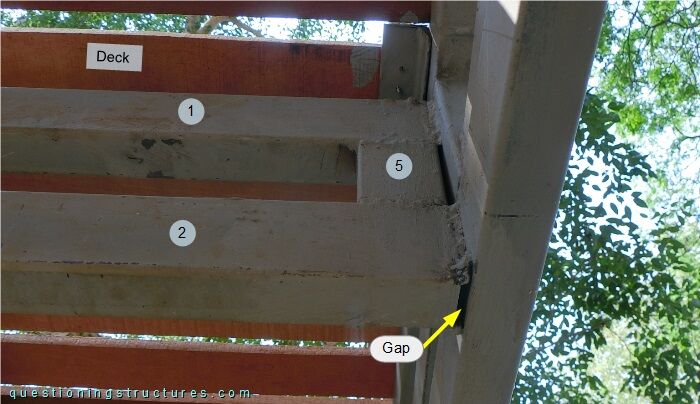General Information
Figure 1 shows a truss bridge that is used by motorcycles, bicycles and pedestrians.

| Main span | ≅ 10 m |
| Type | Underslung truss bridge |
| Truss material | Steel |
| Truss height | ≅ 0.3 m |
| Deck width | ≅ 1.2 m |
Truss Geometry
Figure 2 shows a side view of the main span.

The truss is made of rectangular hollow sections, the height h ≅ 0.3 m, and the verticals' spacing l ≅ 1 m. The diagonals are connected to the verticals and have an inclination angle of α ≅ 9°.
Would there be a structural safety or serviceability problem without the diagonals?
Cross-Frame
Figure 3 shows a bottom view of the bridge.

The deck is made of timber planks; they are connected to the upper chords and the stringer; the latter is carried by cross-frames that consist of two horizontals (1 and 2) and three verticals (3 to 5). Figure 4 shows a cross-frame to truss connection.

The horizontals (1 and 2) and the truss are connected by welding; gaps between the cross-frame and the truss are noticeable.
What is the purpose of the cross-frame?
Alternative Variant
Figure 5 shows a schematic three-dimensional view of the truss bridge and a beam bridge variant.

The truss is continuous, while the beam bridge consists of three simply supported I-beams. The deck and the stringers are equal on both bridges, while cross-beams are installed in the beam bridge instead of cross-frames.